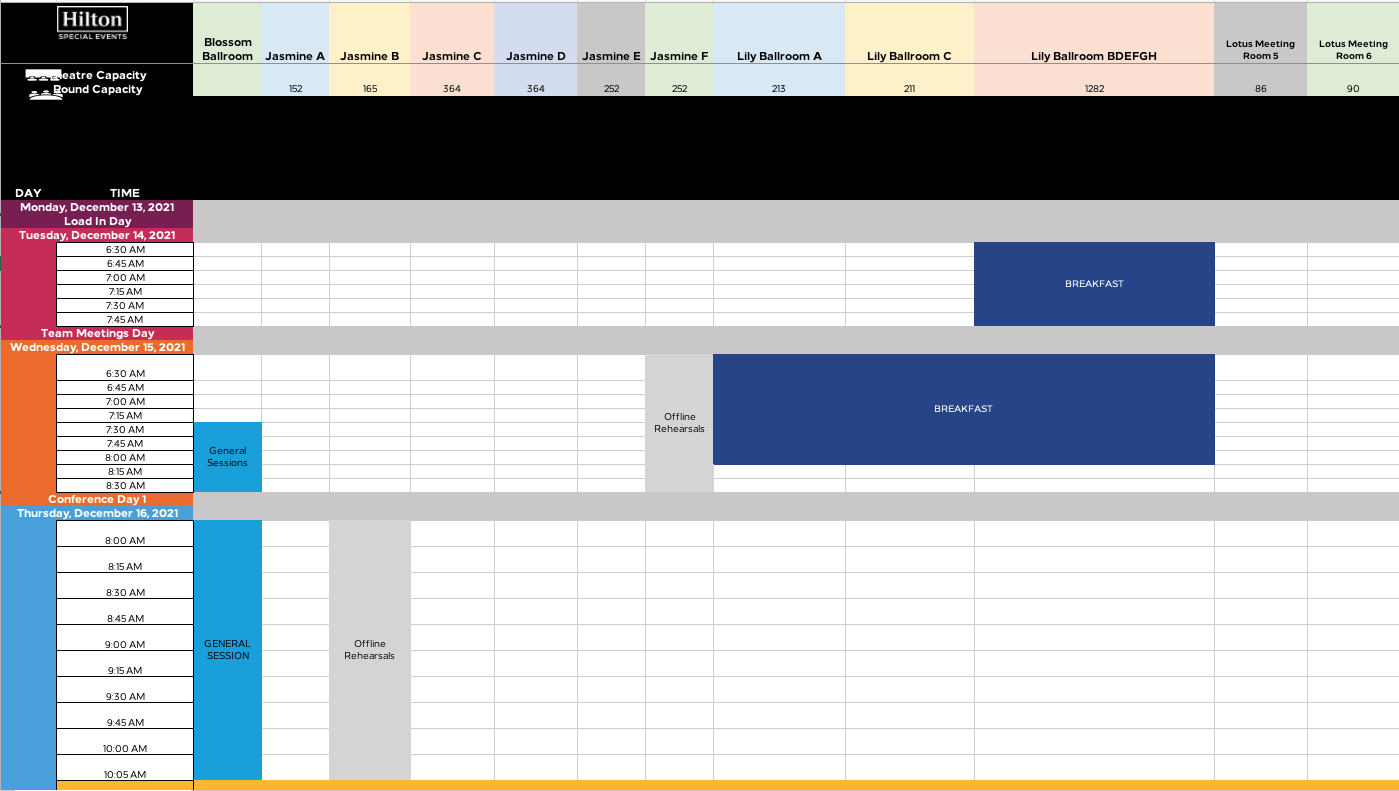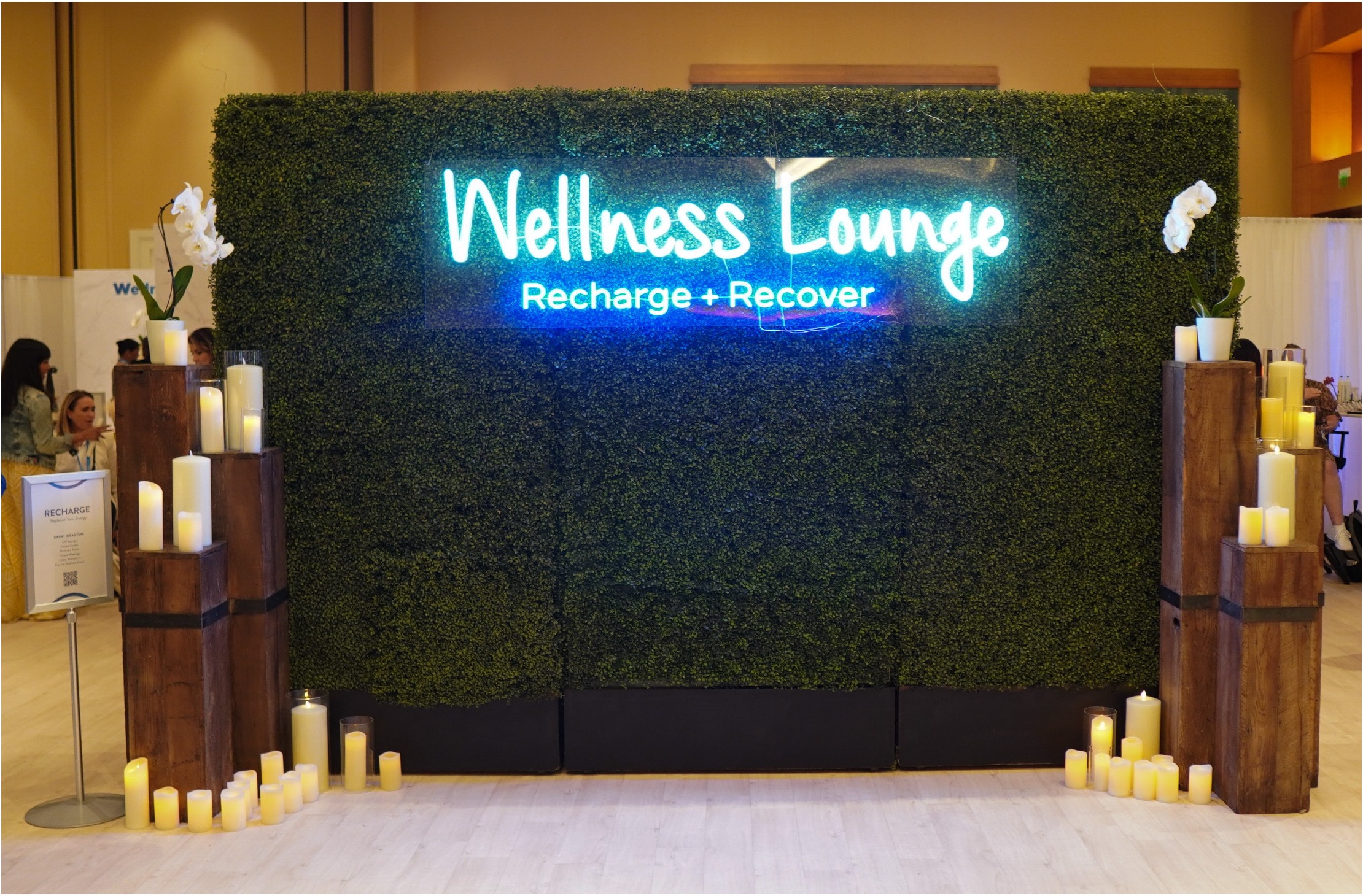There are many elements and intricate details that go into conference planning. As we have shared in previous posts, it is crucial to establish the core objectives for the conference, stakeholder objectives, and what you want the audience to take away from their event experience.
Once strategic objectives and goals have been established, it is time to plan how and where these elements will be executed. Our production team starts by creating a comprehensive space allocation plan, which includes all event agenda items and where they can fit best in the venue. In addition, our team creates a detailed run of show and a production schedule. These documents are vital to keeping everyone aligned.
Steps to Success: As a producer, it’s important to align on what type of space you have and how you can use it to accomplish a compelling, cohesive agenda. Here are a few helpful tips to take to get started:
- How many people are attending a session?
- What is the preferred layout of the room?
- What activity will take place in the space
- Finalize and understand the space that you have in your venue.
- During conference planning, space and session changes are inevitable, but understanding the core objectives of the conference and required sessions (e.g. general session, breakouts, etc.), will help you allocate the space strategically.
- List out the times, dates, and anticipated attendee count you are expecting for each session (i.e., general session, breakouts, workshops, etc.).
- Determining an outline for how many people can attend a session in a particular room will mitigate future revisions.
Building the Space Matrix: A Space Matrix is a spreadsheet that contains all the most important details. It serves as a master document to help you stay on track and allows other team members to follow your progress. This task can feel daunting at first, but try to think of this as a foundational step. Once you start populating sessions in the matrix, it becomes easier to view the larger picture and plan for smaller sessions and spaces.
- Create a “Space Matrix” outline in Excel, Google Sheets, or a similar platform.
- On the top column, list out every room that you have access to over the length of the conference – include their room capacity limits.
- Identify the different rooms you are utilizing for your event (see image below). Begin filling in the larger capacity room needs and confirmed sessions, such as lunch/dinner breaks, general session, guest speakers, and discipline sessions.
- Analyze the remaining sessions by estimated attendees per session and their room needs.
End Result: The space Matrix should include all sessions by room and their respective date and time. *take a look at ACC example*
Helpful Tips:
- Use keywords in your space matrix to make it easier to quickly search for sessions. For example:
- “Accelerate ROI with our Global Preferred Partnerships”
- Keywords: ROI, Partnerships, Global
- “Accelerate ROI with our Global Preferred Partnerships”
- Color coding your sessions will help you remain organized. Create a key in your space matrix to identify what each color represents. This will make it easier for your team members to understand the space matrix and its contents.
- Be sure to include room capacity limits for each session.


















